Subscriber Benefit
As a subscriber you can listen to articles at work, in the car, or while you work out. Subscribe NowIt was an ambitious plan to reduce cigarette smoking in Indiana. But in the end, it went up in a puff of smoke.
In the final days of the legislative session, the Indiana Senate pulled the plug on the wide-ranging proposal to increase cigarette taxes $1.50 a pack, raise the legal age of smoking from 18 to 21, repeal the so-called “smoker’s bill of rights,” and appropriate $35 million a year for tobacco prevention and cessation programs.
Supporters, however, are vowing to try again, and say they will work to make a stronger case next year. Already, they are reviewing their strategy to see whether this year’s loss was a case of bad timing, faulty messaging, poor execution or just plain bad luck.
The organizations behind the effort are some of the largest and most powerful in the state: the Indiana Chamber of Commerce, the Indiana Hospital Association, the Indiana State Medical Association, Anthem Blue Cross Blue Shield in Indiana, and Indiana University’s Fairbanks School of Public Health.
Together, they called themselves the Alliance for a Healthier Indiana and saw their mission as a crusade to reduce smoking, which they call the most preventable cause of death in the state.
Their goal: Snuff out a smoking epidemic that every year costs Indiana nearly $7 billion for health care and lost productivity and claims the lives of more than 11,000 Hoosiers.
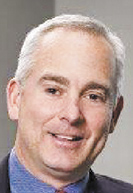 Mills
MillsThey say they are not taking the legislative setback personally.
“I don’t feel defeated,” said Bryan Mills, CEO of Community Health Network and leader of the alliance. “I’m definitely not giving up. … We’ll continue to push for actions to try to address tobacco use.”
Kevin Brinegar, president of the Indiana Chamber, said the alliance will push ever harder next year.
“We’re all committed to this for the long haul,” he said. “This won’t be just a one-session effort and then we’ll slither away under a rock.”
The move to raise taxes was opposed by cigarette retailers, led by the Indiana Petroleum Marketers & Convenience Store Association, which represents 90 percent of the state’s 3,200 convenience stores.
They said the legislation would have put Indiana retailers at a competitive disadvantage to neighboring states with lower cigarette taxes. Indiana now charges a tax of 99.5 cents a pack, ranking the state 34th nationally and below most nearby states. The average state tax is $1.59 a pack, which is in addition to the federal tax of $1.01 a pack.
The proposed increase “was just a bad idea,” said Scott Imus, the association’s executive director. “It would have hurt Indiana consumers and retailers.”
Twists and turns
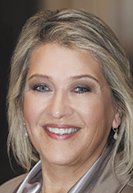 Kirchhofer
KirchhoferAlthough the proposal ended up on the scrap heap, it actually notched up several early successes along the way, with victories in the House before stalling in the Senate.
How the bill ran into trouble shows how legislation can take sudden twists and turns on its way through the process.
The alliance’s first win was to find a supporter in Rep. Cindy Kirchhofer, Republican of Beech Grove and chairwoman of the House Public Health Committee. She wrote a bill adopting all major planks of the alliance’s wish list:
• It would have more than doubled the state tax on cigarettes, with the $1.50-per-pack tacked onto the current 99.5 cents.
• It would have channeled $35 million a year of the new tax proceeds to a smoking prevention and cessation fund. It would have allowed the Legislature to decide how to use the rest of the money, which would have amounted to more than $250 million a year.
• It would have increased the smoking age to 21, as some cities and states have done, including New York City, Kansas City, California and Hawaii.
• It would have allowed employers to screen potential hires for tobacco use, something they can’t do now under the state’s “smoker’s bill of rights,” passed in the early 1990s.
After hearing testimony from both sides, the House Public Health Committee approved the bill 11-0.
“Our committee was trying to send a resounding message,” Kirchhofer said. “We consider tobacco use to be a significant health problem.”
The next step for the bill was the House Ways and Means Committee, which oversees tax legislation. There, things got a bit complicated.
The committee removed two of the bill’s four planks—the tax increase and the smoking cessation funding—and put them in the budget bill. It also reduced the proposed tax hike from $1.50 to $1.
In addition, the committee killed the plank increasing the age of smoking to 21, after several lawmakers said that issue was brand new to them and hadn’t been studied enough. It approved what was left of the bill—repealing the smoker’s bill of rights—and sent it to the full House, which approved it 54-38.
The bill then moved to the Senate, where it got assigned to the Commerce and Technology Committee. The committee chairman, Republican Sen. Mark Messmer of Jasper, said in a statement that he “did not see a reason to hear the bill.” He said proponents claimed the bill was necessary to allow employers to give health insurance discounts to employees to encourage them not to smoke. He said current law already allows that.
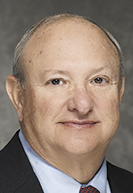 Kenley
KenleyThe budget bill, meanwhile, ran into other problems. Some lawmakers liked the idea of approving the $1-per-pack cigarette tax increase, in part to replace sales tax revenue that would be used for road funding.
But Sen. Luke Kenley, the powerful Republican chairman of the Senate Appropriations Committee, opposed the idea. He said he was worried the federal government might reduce health care funding to the states if Congress repealed the Affordable Care Act. That would leave Indiana searching for $500 million to make up the difference for the state’s popular Medicaid expansion program known as HIP 2.0.
He said Indiana might need to raise cigarette taxes next year to pay for that program.
“We really sort of need to save that tax for the day we might have to apply it to our HIP 2.0 program,” he said.
But budget writers did approve $15 million for smoking prevention and cessation programs.
The General Assembly then passed a $32.3 billion, two-year budget, without the cigarette tax increase. Gov. Eric Holcomb promptly signed the budget bill.
Lessons learned
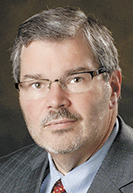 Halverson
HalversonSome Indiana health leaders said the whole issue of raising cigarette taxes somehow turned from a discussion of public health to a discussion of revenue and budgets. The underlying reason for raising cigarette taxes—to discourage smoking—was forgotten.
“That’s where we lost it,” said Paul Halverson, dean of IU’s School of Public Health, a supporter of the tax increase. “Obviously, we didn’t communicate well enough for the legislators to understand either the implications of the problem [or] what the solutions were.”
The alliance, he said, needs to do “some thinking and regrouping” to determine how to tell its story better.
And what is the story?
“That’s easy,” he said. “Tobacco is the leading cause of preventable death in Indiana. We can fix it.”
Other states that have raised cigarette taxes have seen sharp declines in smoking rates, he said.
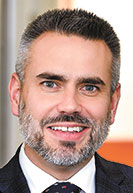 Tabor
TaborIndiana ranks 41st among all states for overall health, and 44th for smoking rate, according to United Health Foundation’s annual rankings. Twenty-three percent of Indiana adults smoke, higher than the U.S. median of 18 percent, according to a study released last year by the Richard M. Fairbanks Foundation.
Raising taxes is not easy, business and health leaders acknowledge, especially in a state famous for low taxes. But in this case, they say, it can be done, given enough time.
The Indiana Hospital Association said discussions about raising taxes often take several years before lawmakers buy in. A similar push next year could have a different outcome, said Brian Tabor, the association’s executive vice president.
“It takes a while to get everyone on board when you’re talking about increasing revenue,” he said. “I think the stage is now very well set to address these very important health issues, hopefully as soon as 2018.”•
Please enable JavaScript to view this content.

